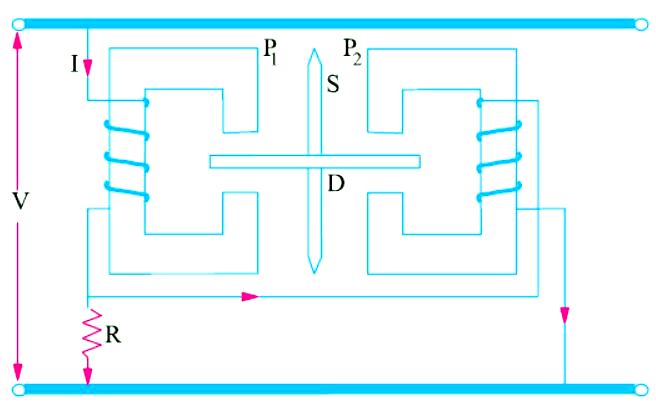Induction Voltmeter
Construction of Induction Voltmeter is similar to that of an induction ammeter except for the difference that its winding is wound with a large number of turns of fine wire. Since it is connected across the lines and carries very small current (5 − 10mA), the number of turns of its wire has to be large in order to produce an adequate amount of m.m.f. Split phase windings are obtained by connecting a high resistance R in series with the winding of one magnet and an inductive coil in series with the winding of the other magnet as shown in Figure A.

AdBlock-2
Errors in Induction Instruments
There are two types of errors (i) frequency error and (ii) temperature error.
1. Since deflecting torque depends on frequency, hence unless the alternating current to be measured has same frequency with which the instrument was calibrated, there will be large error in its readings. Frequency errors can be compensated for by the use of a non-inductive shunt in the case of ammeters. In voltmeters, such errors are not large and, to a great extent, are self-compensating.
2. Serious errors may occur due to the variation of temperature because the resistances of eddy current paths depends on the temperature. Such errors can, however, be compensated for by hunting in the case of ammeters and by combination of shunt and swamping resistances in the case of voltmeters.
Advantages and Disadvantages
1. A full-scale deflection of over 200° can be obtained with such instruments. Hence, they have long open scales.
2. Damping is very efficient.
3. They are not much affected by external stray fields.
4. Their power consumption is fairly large and cost relatively high.
5. They can be used for a.c. measurements only.
6. Unless compensated for frequency and temperature variations, serious errors may be introduced.
Read article – Units of Resistivity
Visit NCERTplanet.com for NCERT solutions and Textbook downloads




